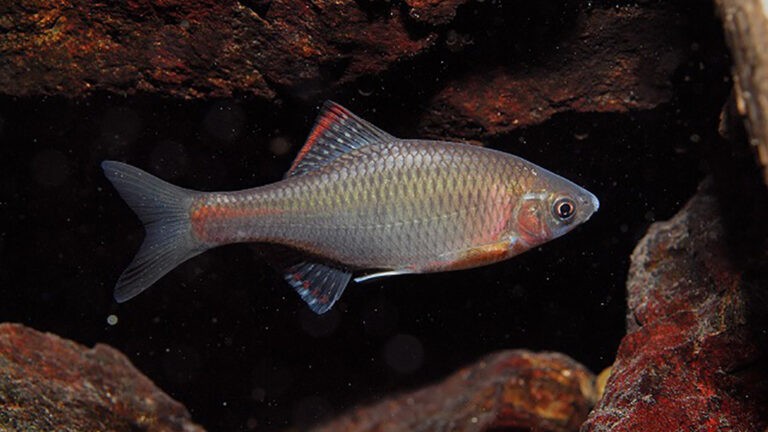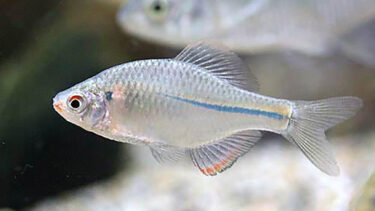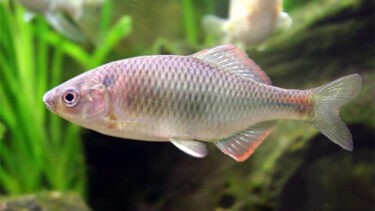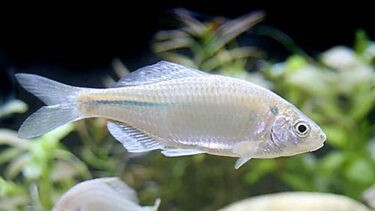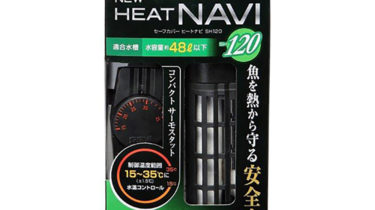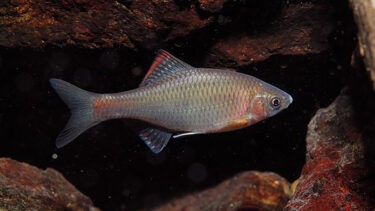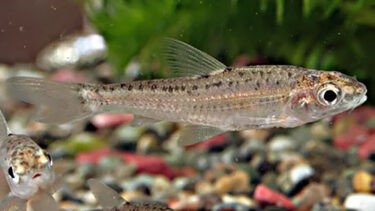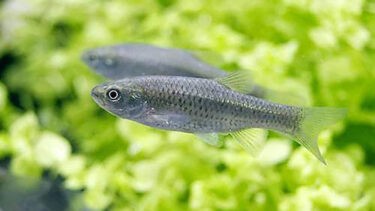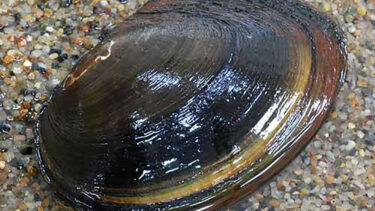The Seboshitabira is a beautiful river fish with red and white rims on its tail. It is also the most likely to become extinct among the Tanago species. In this article, I would like to explain in detail the characteristics of the seboshitabira and how to keep it.
What is Sevoshitavira?
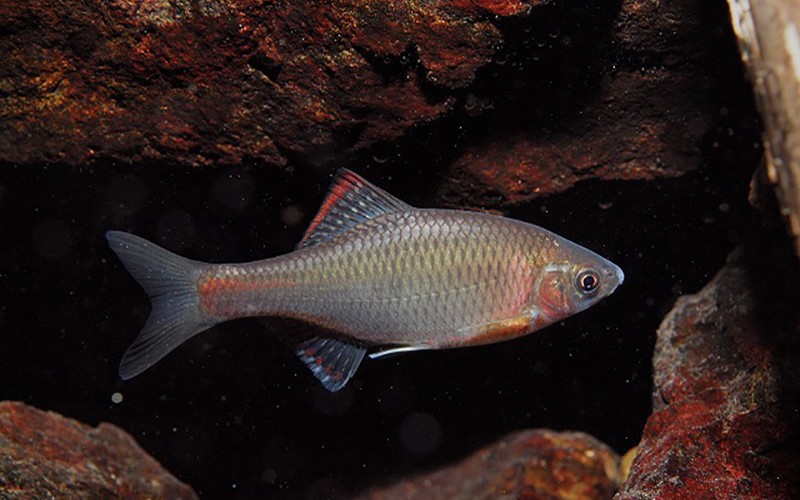
The Seboshitabira belongs to the family Carpidae of the order Carpidae and the genus Tanago. The habitat of the sevoshitabira is the northwestern part of Kyushu, centering on the Chikugo River that flows through Fukuoka, Saga, and Kumamoto prefectures in Japan, and Iki City in Nagasaki Prefecture. Sevoshitabira also belongs to an endemic species found only in Kyushu. The seboshitabira belongs to the "Endangered Class IA," which means that it is at very high risk of extinction in the near future. It is the most likely species of bitterling to become extinct in the near future. For this reason, it was designated as a domestic rare wild animal and plant species in 2020. As a result, collecting, selling, and transferring them have been prohibited under the "Species Preservation Law" since February 1, 2020.The sevocitabila is laterally flattened and has a low, elongated body shape. Its body color is silvery white with a small blue spot behind the gill cover. The rim of the rump is also characterized by its beautiful red and white coloration.
The kazetoge Tanago is a genus of the carp family Cyprinidae that inhabits the Iki region of Saga, Fukuoka, Kumamoto, and Nagasaki prefectures in Japan. It is also the smallest species in the tanago genus. This time [...].
The Yaritanago is a river fish that inhabits the western part of the Korean Peninsula in East Asia and the Honshu, Shikoku, and northern part of Kyushu in Japan. In this article, we will discuss the characteristics of the Yaritanago and its keeping [...].
The northern red-finned bitterling is a member of the carp family Tanago, which is found in the Sea of Japan and Hokuriku region of the Tohoku region, including Aomori and Niigata prefectures in Japan. In this article, we will discuss the [...].
The white-finned bitterling is a member of the family Carpidae of the order Carp, and belongs to the genus Tanago of the family Carpidae, which inhabits the Nobi Plain spreading over Aichi Prefecture and the Yodo River system of Lake Biwa, which flows from Shiga Prefecture to Osaka Prefecture. Now [...].
How to keep Sevoshitavira
Sevocitabila can be an easy species to keep if you know how to keep them. The lifespan of Sevocitabila is about 2 to 3 years. Their body size is approximately 7 to 10 cm. However, both lifespan and body size vary depending on the environment in which they are kept and the food they are fed. They prefer slightly alkaline to neutral water quality, with a pH of 7.0 to 8.0. They can live in water temperatures between 5-25℃.
A heater is a device that maintains a constant water temperature. If you go to a specialty store that carries heaters, you will find a wide variety of types. Some people may be at a loss as to which one to choose. In this article, we would like to explain about such heaters [...]
Points to keep in mind when mixing swimmers
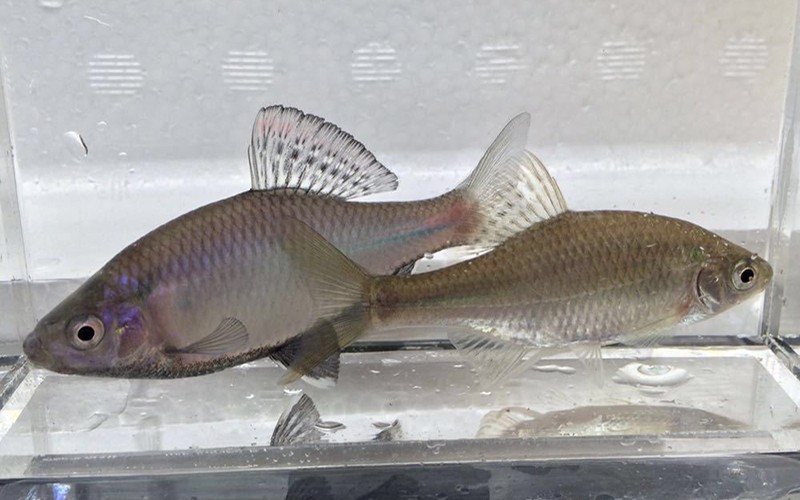
Regarding mixed swimming, Sevocitabila have a mild temperament. However, they may chase smaller individuals than Sevocitabila, so it is recommended to mix them with medium-sized species.Smaller species of Tanago should not be mixed with other small species of the same family. When it is time to breed, they spawn on bivalves, but if they want to spawn on each other, they often fight and the smaller species may not be able to breed well. If you must include them in your breeding program, please do so with the utmost care.
Many people think that goldfish are the goldfish that you see at fairs and festivals in the summer, and that there are many different kinds of goldfish. And it is no exaggeration to say that each type of goldfish has its own characteristics, and that is the best part about goldfish [...]
When you go to a specialty store to look at killifish, you will be surprised at the many varieties available. The prices are different, as are the body colors and patterns, so it is hard to know what to choose. So, in this article, I would like to explain in detail about the different types of medaka. Types of Medaka Scarlet Medaka [...].
Points about spawning
Many people who keep sevocitabila want to breed them. In the wild, sevocitabila spawn around spring. When kept in captivity, the signal for spawning is when the water temperature reaches around 20 degrees Celsius. When it is time to spawn, males are dark green all over and their gill covers and thorax turn red. Females extend a black tube called the oviduct from near the rump.Females may still have a black spot in the center of their dorsal fins as adults, which can be a key to distinguish them from other fish.
Tanago lay their eggs on bivalves, whereas other ornamental fish such as killifish and goldfish lay their eggs on water plants. This spawning method is the biggest obstacle in trying to breed Tanago. This is because, unlike aquatic plants, you have to keep bivalves. If the bivalve that the bitterling spawned dies before the eggs hatch, the eggs will die with it. Another difficulty is that there are fewer specialty stores that deal in bivalves compared to aquatic plants. The types of bivalve mollusks used by bitterlings for spawning include the pine cone mussel, the dove mussel, the echinoderm oyster, and the mussel. If you are not sure, we recommend that you ask at a specialty store. If you want to breed bitterlings, the first step is to find bivalves.
When the bivalve is in the aquarium, the female lays her eggs in the gills of the shell using an egg tube. The male fertilizes the eggs by applying sperm to them immediately after the female lays them. The eggs hatch about 3-4 days after spawning, consume the yolk sac (nutrition received from the parents) in about a week, and grow to about 1 cm in about 20 days and emerge from the shell. At this time, the juvenile fish may have a shellfish baby attached to its fins. Just as the bitterling uses the shells, the shells use the bitterlings to expand their habitat. The male may protect the bivalves after laying eggs, but the fry are often eaten, so if you are keeping them in an aquarium, it is recommended to move the shells to another tank after confirming the spawning. Successful spawning of bitterling depends on how well you can keep the bivalves stable, so if you are worried about them or are not confident about handling them, we recommend that you purchase bivalves from a specialty store just before the bitterling spawns.
What to keep in mind when keeping sevocitabila

The sevoshitabira can be a beautiful river fish with red and white coloration on the edges of its tail fins. The sevoshitabira is an endemic species found only in Kyushu. It is the most likely species to become extinct among the bitterling species. Because of this, collecting, selling, and transferring them are now prohibited, and they are not sold in stores, so there are few opportunities to see them.It is an essential part of the traditional Japanese ecosystem, so it is a highly recommended river fish in terms of education. If you are interested in seboshitabira, we recommend that you take a look at the local government's website.

